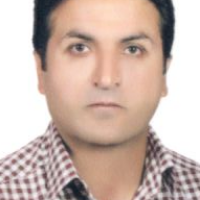Effect of 4 weeks concurrent resistance-endurance training with continuous and interval methods on muscular power, strength and maximal oxygen consumption in young men soccer players
Soccer requires high levels of physical fitness, therefore coaches and athletes tend to do comprehensive training exercises such as concurrent training. The aim of this study was to investigate the effect of 4 weeks of concurrent resistance-endurance training on strength, power, and maximum oxygen consumption in young male soccer players.
Thirty young soccer players aged 18 to 20 years with an average height of 177±8 cm and a weight of 70±3.4 kg were divided into two groups of concurrent high-intensity training and low-intensity training. Both groups performed their training protocol, 3 sessions per week during 4 weeks. Before and after 4 weeks, maximal oxygen consumption were measured using the Yo-Yo Recovery Stage 1 test, as well as upper and lower limb strength and leg power also were measured by maximal muscle strength test and sargent vertical jump test respectively. Paired and independent t-tests were used to evaluate intra-group and inter-group changes, respectively, where the significant level set as p < 0.05.
Concurrent resistance-aerobic training improved muscle power and strength in both groups (p=0.05), but only concurrent resistance-aerobic training with high intensity indicated significant effect in maximizing oxygen consumption (p=0.03).
Overall, the results showed that high-intensity resistance-aerobic training is more effective in improving some of the physical fitness factors in young men soccer players.
-
The Efect of Exercise Training on Myonectin and Insulin Resistance in Overweight and Obese People: A Systematic Review and Meta-Analysis
Omid Zafarmand, *
Sport Physiology &Management Investigations, -
The effect of resistance training and spirulina supplementation on plasma levels of spexin, Cardiovascular risk factors and some body composition indices of overweight and obese men
Fahimeh Imanpoor, *, Shila Nayebifar
Journal of Sports and Biomotor Sciences,


